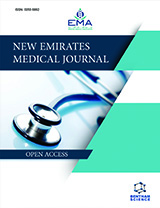Abstract
Background: Nutritional management of preterm infants represents a significant challenge for most practitioners caring for sick and/or premature babies. Despite aggressive parenteral and enteral alimentation, a considerable number of preterm infants continue to fall far short of expected growth trajectories that match infants of similar gestation in-utero. Postnatal growth failure may be associated with future neurodevelopmental and cognitive impairments.
Objective: The aim of the research is to investigate the incidence of postnatal growth restriction (PNGR) and characteristics of nutritional practices and growth parameters in a cohort of preterm infants born <32 weeks’ gestational age (GA) in a single neonatal intensive care unit (NICU).
Methodology: This prospective study included 130 preterm infants born <32 weeks’ GA and admitted to the NICU between February 2018 and January 2020. The infants were divided into two groups: A (GA 23–26+6 weeks [n=50]) and B (27–31+6 weeks [n=80]). The association between PNGR and predicting risk factors was evaluated using logistic regression models.
Results: PNGR was found in 62 (47%) infants at 28 days of life and increased to 73% of infants at 36 weeks’ postmenstrual age. Low birth weight and GA were independent factors predicting growth failure. PNGR was significantly correlated with birth weight (p < 0.01), length (p < 0.002), and GA (p < 0.03) at birth; however, HC was not a predictor of PNGR at 28 days. At 36 weeks’ PMA or discharge, PNGR was more pronounced in length, with a mean Z-score of -3.0, followed by weight, with a mean Z-score of -2.1, and an HC Z-score of -1.4.
Conclusion: PNGR was significantly high in preterm infants <32 weeks’ gestation. A significant nutritional gap still exists between the recommended and actual caloric and protein supplementation, especially in the first few days after birth. Delayed optimization of caloric intake may be insufficient to promote growth trajectories, especially in preterm infants with significant morbidities.
Keywords: Growth, Nutritional status, Premature, Infants, Z score, Calories.
[PMID: 333369]
[http://dx.doi.org/10.1097/MPG.0b013e3181adaee0] [PMID: 19881390]
[http://dx.doi.org/10.1186/1471-2431-13-59] [PMID: 23601190]
[http://dx.doi.org/10.1038/jp.2009.55] [PMID: 19461590]
[http://dx.doi.org/10.1136/archdischild-2012-303536] [PMID: 23934365]
[http://dx.doi.org/10.1097/MPG.0b013e31822a009d] [PMID: 21701404]
[http://dx.doi.org/10.1038/s41390-019-0313-z] [PMID: 30705399]
[http://dx.doi.org/10.1097/00000658-197801000-00001] [PMID: 413500]
[http://dx.doi.org/10.1111/apa.12569] [PMID: 24460697]
[http://dx.doi.org/10.1136/archdischild-2014-308095] [PMID: 26201534]
[http://dx.doi.org/10.1097/MPG.0000000000000220] [PMID: 24556755]
[http://dx.doi.org/10.1016/j.anpede.2018.02.004] [PMID: 29650428]
[http://dx.doi.org/10.3945/ajcn.115.117309] [PMID: 26791182]
[http://dx.doi.org/10.1542/peds.2004-1699] [PMID: 16322172]
[http://dx.doi.org/10.1016/j.jpeds.2017.10.005] [PMID: 29246464]
[http://dx.doi.org/10.1542/peds.2015-0129] [PMID: 26101360]
[http://dx.doi.org/10.1542/peds.2008-3258] [PMID: 19651583]
[http://dx.doi.org/10.1159/000336127] [PMID: 22441508]
[http://dx.doi.org/10.1007/s40124-014-0057-5]
[http://dx.doi.org/10.1111/apa.13899] [PMID: 28470839]
[http://dx.doi.org/10.1136/adc.2001.004044] [PMID: 15321963]
[http://dx.doi.org/10.1111/j.1651-2227.2004.tb00844.x] [PMID: 15841762]
[http://dx.doi.org/10.1016/j.jped.2013.05.007] [PMID: 24156833]
[http://dx.doi.org/10.1111/j.1442-200X.2007.02530.x] [PMID: 18279209]
[http://dx.doi.org/10.1371/journal.pone.0051166] [PMID: 23227249]






























